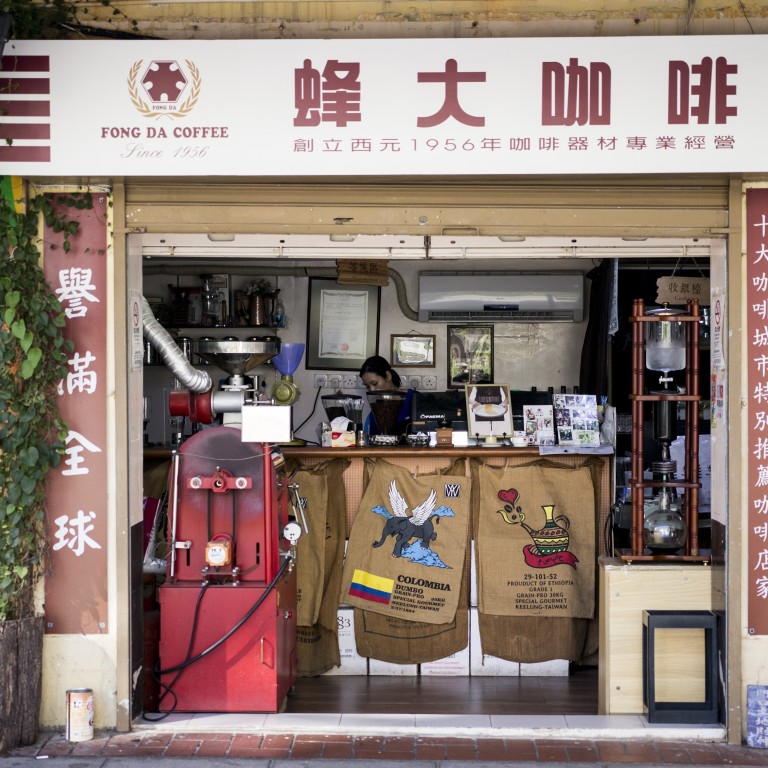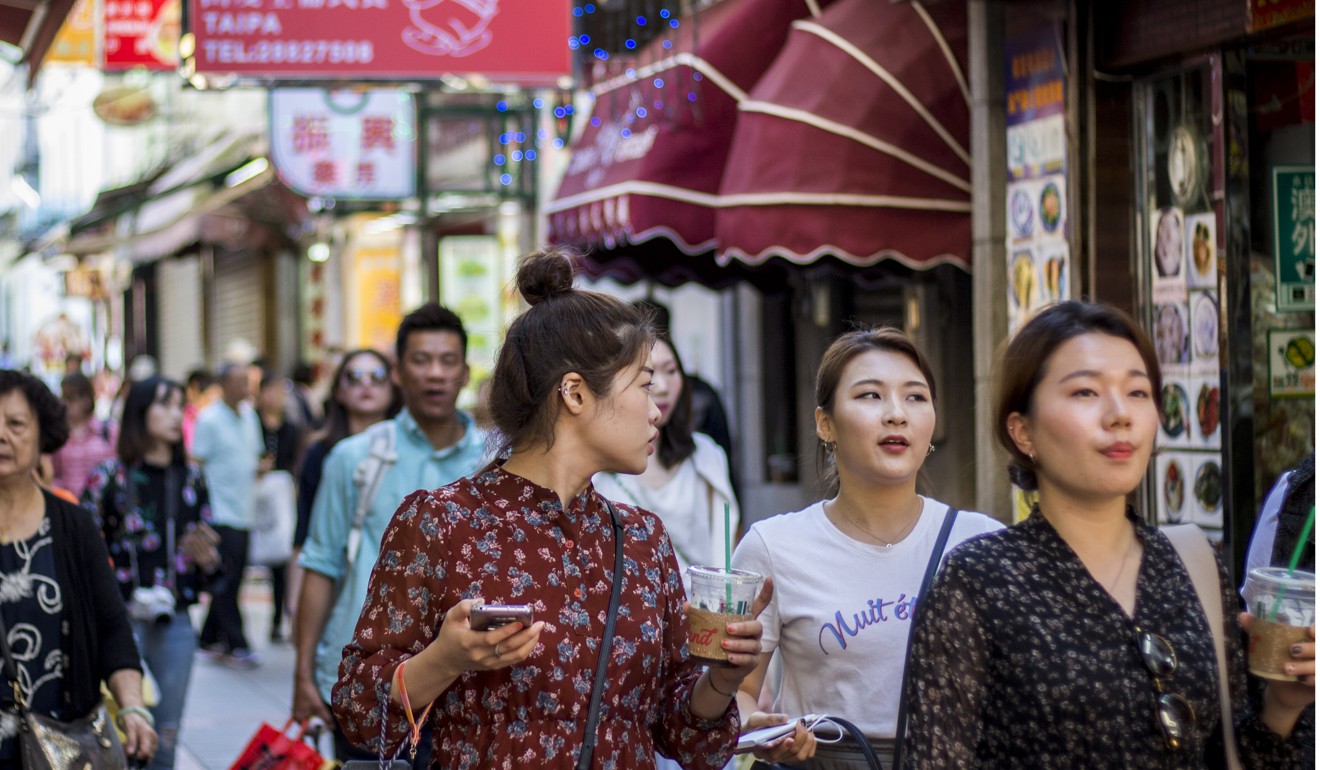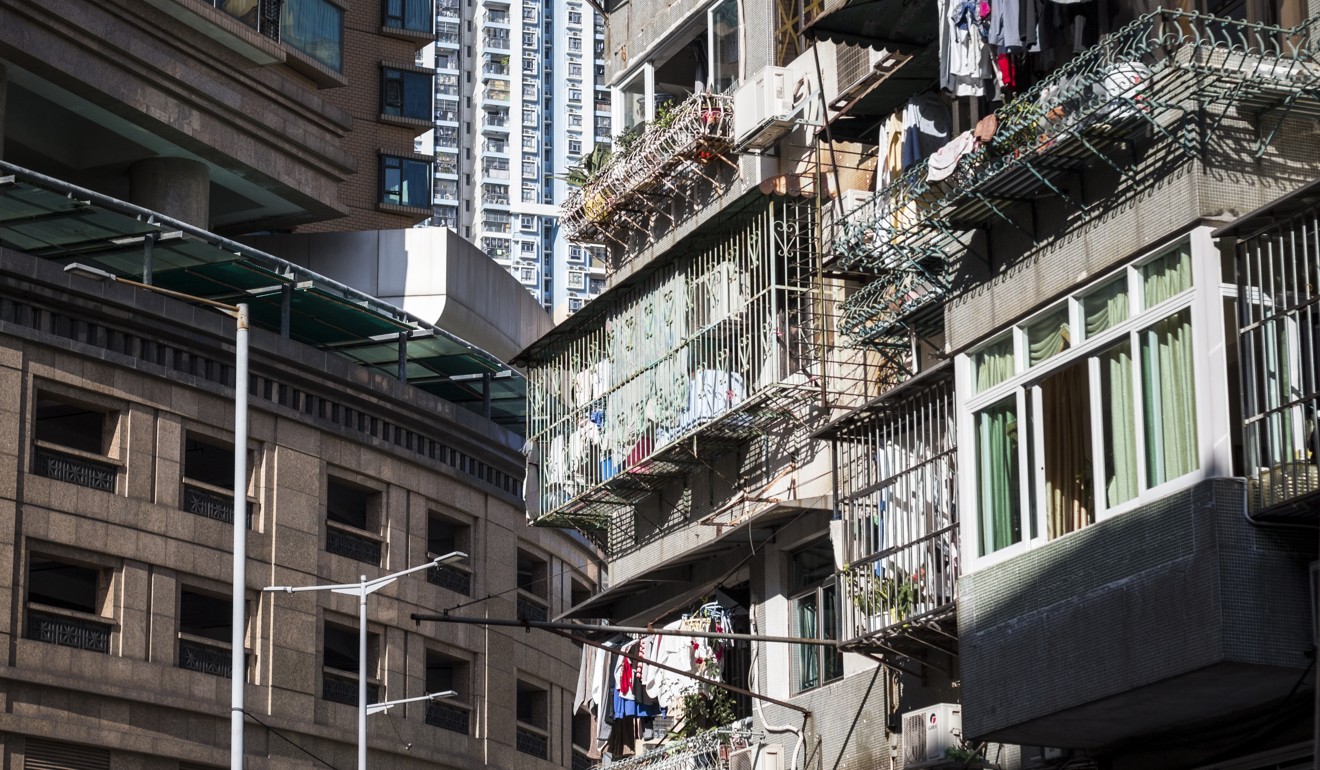
Corner of Macau rich in Portuguese colonial history undergoes revival as new restaurants, art spaces open
- Narrow streets of Taipa Village, a historical enclave of Portuguese colonial architecture, celebrate the spirit of old Macau
- Area has seen a new generation of cafes, restaurants and cultural spaces open that have infused the old settlement with fresh energy
Macau’s casino companies have spent billions of dollars on recreating European streetscapes in complexes like The Venetian and The Parisian. But the real thing is just a short walk away.
Restaurateur Gagan Sethi discovered this when he was working to open a food court restaurant in one of the casinos. As he wandered the narrow streets of Taipa Village, a historic enclave of Portuguese colonial architecture just beyond the looming resorts of the Cotai Strip, he thought it would be the perfect spot for a cocktail bar – something that is still rare in Macau outside its handful of five-star hotels.
“This is one of the only places in Macau where you get a true feeling of being in a Portuguese environment,” he says.
It inspired Sethi to think back to his own roots in India. Like Macau, the coastal province of Goa was a Portuguese colony for several centuries, and Sethi thought that Goan cuisine paired with inventive concoctions from mixologist Chetan Gagan would feel perfectly at home in Taipa.

The result is Goa Nights, which has a cocktail bar on the ground floor of a three-storey shophouse and a top-floor dining area that overlooks the village.
“Most of our customers are locals and expats living in Macau, but we have more tourists who are looking to get out of their hotels,” he says. “The cultural side of tourism is growing.”
How ex-Portuguese soldier learned to cook and opened Antonio’s restaurant in Macau
Sethi isn’t alone in thinking Taipa Village is rife with opportunity. Over the past few years, a new generation of cafes, restaurants and cultural spaces have infused the old settlement with fresh energy.
Much of it has been spearheaded by real estate fund manager Sniper Capital, which has bought and renovated a number of village properties. It also supported the creation of the Taipa Village Association, a group of business and property owners that promotes the village as a cultural destination.
“It was mainly set up like a non-profit organisation, with the objective of promoting the arts and culture area in Taipa,” says Pamela Chan, who runs the association. “We have a strong influence from Cotai, so we are quite optimistic about the tourism development here. But we are trying to diversify, by combining retail and dining concepts, and trying to add artistic activities.”

It is a unique opportunity. Most of Macau’s historic neighbourhoods have been swamped by tourists, including the Unesco World Heritage site that surrounds the Largo do Senado and the Ruins of St. Paul’s. But Taipa Village remains laid back, with an eclectic mix of attractions that seem to appeal to local Macau residents as much as they do to tourists.
Originally a pair of islands off the coast of mainland Macau, which is a special administrative region of China, Taipa was first settled by Hokkien-speaking fisherfolk around 800 years ago.
Portuguese celebrity chef Henrique Sá Pessoa opens first restaurant in Asia in Macau
In more recent centuries, the islands were a notorious hideout for pirates – “virtually no official presence existed in the area,” notes historian Robert Antony in his book Elusive Pirates, Pervasive Smugglers. In 1833, Chinese officials ordered Taipa residents to purge pirates from their midst – a campaign so bloody the imperial authorities felt obliged to pay reparations to survivors.
Piracy continued into the 19th century. In 1847, Portugal annexed Taipa and built a fort to combat marine outlaws.
This marked the period when Macau truly became a colony, after three centuries of power sharing between Portugal and China, a development that was spurred by economic competition from the new British colony of Hong Kong, across the Pearl River Delta from Macau.
Over the next few decades, the Portuguese built a church, gardens, squares, civic halls and seaside villas.

Chinese families built temples, shophouses and a fireworks factory, which was the major source of employment on the island for most of its recent history. All of this heritage is still standing today; unlike Hong Kong, Macau’s economic growth was relatively slow, which had the happy side effect of preserving many of its old buildings.
Those economic fortunes changed with the casino boom. Taipa Village is now sandwiched between two swathes of reclaimed land, one home to a high-rise residential district, the other to the Cotai Strip.
Although it no longer faces the sea, the village maintains a portion of its coastline thanks to the Práia de Nossa Senhora da Esperança, a lake that was created when the Cotai Strip was filled in.
It has a lot of small alleys that are closed to traffic, so you can be walking along, losing yourself in the labyrinth of the village.
This is the first thing most visitors to the village will glimpse as they make their way north from the casinos. If you walk along the shore of the lake, you will come across the Casas da Taipa, a collection of five colonial villas built in 1921 for Portuguese civil servants. Each has been restored.
One contains exhibits on the history of Taipa and the nearby island of Coloane, another showcases traditional Portuguese costumes and a third contains antique furniture and household artefacts that shed light on colonial life in the early 20th century.
A small hill rises behind the villas, crowned by Our Lady of Carmo Church, which was built in 1885 with pale yellow stucco walls and a typically Portuguese lack of ornamentation. From here, you have the option of descending an elegant staircase flanked by banyan trees, or a cobbled street that passes by the former Taipa town hall, which is now home to another history museum.
Whichever route you take, the village begins to reveal itself: a tightly knit blanket of pitched-roof houses painted in cheerful pastel hues of pink, teal and yellow.

“It has a lot of small alleys that are closed to traffic, so you can be walking along, losing yourself in the labyrinth of the village,” says artist and architect João Ó. “It’s very cosy.”
When he was growing up in Macau in the 1980s, Ó remembers Taipa Village as a quiet, traditional place, with a handful of well-known seafood restaurants, along with street hawkers selling Macau classics like fried pork chops on fluffy Portuguese buns.
“Most of them are still there,” he says, although the iconic pork chop bun stall that stood under the banyan-shaded square next to the Museum of Taipa and Coloane History was forced to close after a government crackdown on street food.
Just over a year ago, Ó was approached by Pamela Chan to turn an empty village house into the Taipa Village Art Space.
“I thought the idea was very exciting,” he says. He decided to forgo the fast pace of a typical commercial gallery in favour of three-month exhibitions by a mix of emerging local and overseas artists.
“We have four shows each year,” he says. “With experience we understood that we should do some local Chinese artists that have never been shown. Then some Portuguese or non-Chinese. And then maybe an international artist.”
Eat Drink Asia: Finding the best food in Macau
The gallery is tiny – just 30 square metres (323 square feet) – but Ó says that is a positive.
“The smallness of it gives us the liberty to experiment with whatever we want,” he says. “Many of the artists that we show there, most of them haven’t shown their work publicly before. [So after they show here, some of the artists have] courage to pursue their artistic career. That is the most fulfilling as a curator.”
He feels the same way about the changes in the village. “The spirit is still there, but it’s transformed in a contemporary way,” he says. He points in particular to some of the new businesses that have opened, such as Rooftop and Quarter Square, two cafe-boutiques that have rooftop terraces with a view over the village. “They understand the value of the place.”

